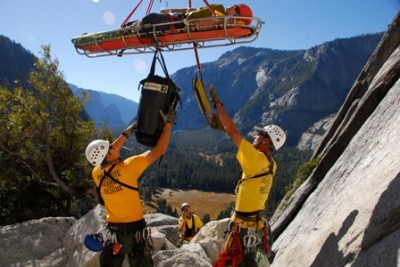
Yosemite Search and Rescue technicians perform a climber rescue at the Royal Arches.
The National Park Service (NPS) search-and-rescue personnel spent a collective 92,732 hours on-mission last year. The tireless efforts of these men and women have contributed to America’s parks becoming safer places, but cost the Service nearly $5.2 million. According to the National Parks Traveler, a report recently released by the NPS found the greatest “contributing factor” leading to a park goer requiring rescue was fatigue or poor physical condition. “Error in judgement” was a close second.
“Always be willing to turn around when you encounter conditions you’re not prepared for or other unexpected circumstances,” the NPS advises on its website.
Inadequate equipment or training was also cited as a major source of rescue missions. The NPS is now announcing ramped-up efforts in visitor education in order to cut down on these easily preventable shortcomings.
“A new effort led by the Office of Risk Management’s Public Risk Management Program in collaboration with parks to expand the preventive search and rescue programs around the NPS, we believe, will have direct impact on reducing the need for SAR responses,” said Sara Newman, the head of the NPS’s Office of Risk Management.
The NPS oversees nearly 84.4 million acres of land across the United States. The agency’s search-and-rescue teams braved the harshest and wildest conditions in the nation for a total of 2,876 missions last year. In over 85 percent of these missions the subjects were found within 24 hours of the teams being contacted, the majority of which involved day hikers. The most dangerous area of the park system, the Intermountain Region, also happened to be one of the most popular. The region includes Yellowstone, Glacier, Grand Canyon, and Big Bend national parks and contains some of wildest terrain in the park system.
A number of basic but useful tips for day hikers can be found on any NPS website, sometimes even tailored specifically to a individual park.
Image courtesy Dave Pope/National Park Service

 Your Privacy Choices
Your Privacy Choices
 The
The